All posts by Magnus Ringh

Adding Information to Materials in User-Defined Material Libraries
Want to add information to materials in user-defined material libraries? Learn how to do so in 6 steps here.

Using LaTeX to Add Mathematical Expressions to Plot Titles
Interested in adding mathematical expressions to your plot titles? As of COMSOL Multiphysics® version 6.2, this is now possible. Learn how here.
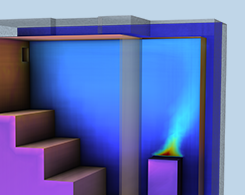
The Heat Is On: Modeling Temperature Distribution in a Sauna
How long does it take for a dry sauna to heat up? Here, we use heat transfer and fluid flow modeling to find the answer.
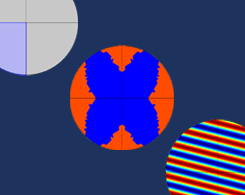
Using the Expression Operator in COMSOL Multiphysics®
What’s the difference between an expression operator and an analytic function? Find out in this blog post and see an example of an expression operator in action.
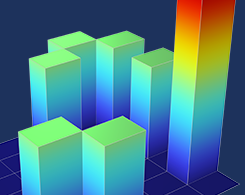
Getting the Stats: Computing Standard Deviations and Other Statistical Quantities
Here’s a comprehensive intro to computing and visualizing statistical quantities in COMSOL Multiphysics® .
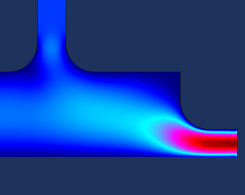
Add a Full State-Space Feedback Controller to a Control System Model
Get a brief overview of full state feedback, learn how to use the State-Space Controller add-in, and get a demonstration of implementing the add-in using a mass-spring-damper system example.
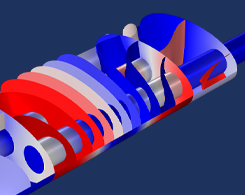
Generating Microsoft® PowerPoint® Slideshows from Your Models
Did you know that you can generate slideshow presentations of your model results in the Microsoft® PowerPoint® format as of COMSOL Multiphysics® version 5.6?

Using the Material Libraries in COMSOL Multiphysics®
The built-in material libraries are databases with materials and their associated properties, while the add-on Material Library contains material properties for more than 3800 materials.
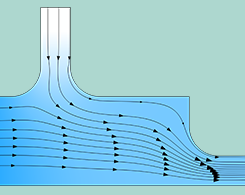
How to Simulate Control Systems Using the PID Controller Add-In
A PID controller can be used in a variety of industries. This blog post demonstrates how a PID controller add-in can be easily incorporated in two simulation examples.

Using Web Browser Translation Tools for COMSOL Documentation
COMSOL documentation includes a lot of helpful information. Most web browsers include an automatic translation tool that enables you to read the documentation in the language of your choice.

Comparing 2 Model Files in the COMSOL Multiphysics® Software
Why compare 2 model files? You can identify and correct errors in your current model, document and check differences between two versions of a model under development, and more…

Using Geometry Parts and Part Libraries in COMSOL Multiphysics®
If you’re working with a model that contains complex geometries, you can use geometry parts and the part libraries to streamline and simplify your model setup.

How to Create Custom Reports Using Report Templates
You can document and showcase your simulation setups and results with reports. To make this process more efficient, COMSOL Multiphysics® includes tools for creating easy-to-use report templates.
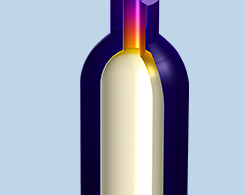
Can a Wine Cooler Actually Keep Your Beverage Cold?
When enjoying nice meals outside, some people use wine coolers to keep their beverages cold. But can a wine cooler actually keep a bottle of wine chilled, and if so, for how long?
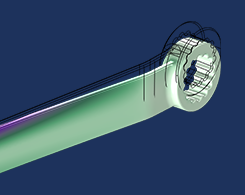
How to Manage Multiple Solutions in COMSOL Multiphysics®
3 ways to manage multiple solutions in COMSOL Multiphysics®: Combine 2 solutions into 1, store the solutions in different data sets, or join the solutions to compare them.
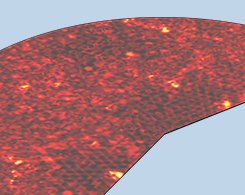
Finding the Best Coal Arrangement for Even Heat in a Grill
Pizza on the grill? It’s actually quite delicious. Here, we use heat transfer modeling to determine how the grill’s coals should be arranged for even heating.

Why Doesn’t the Ice Cream in a Baked Alaska Melt?
The ice cream in a baked Alaska stays frozen, even when placed in a hot oven. How is this possible? We investigate this mysterious dessert with heat transfer simulation.
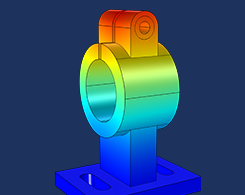
Minimize Your Model File Size with Storing Solution Techniques
Get a demonstration of some tools and techniques for storing selected output quantities in COMSOL Multiphysics®, as well as minimizing model file sizes and the time required to display data.
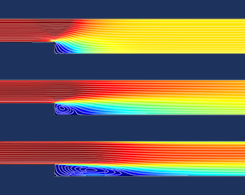
Plotting the Algebraic Residual to Study Model Convergence
Learn how to use the residual operator to plot the algebraic residual of your model, as well as visualize and understand the convergence properties of turbulent flow simulations.
